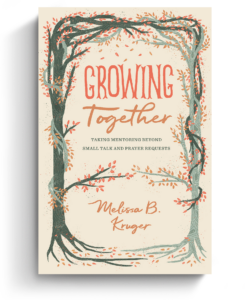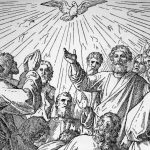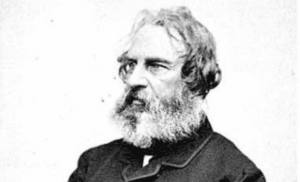The reports of Jesus’s baptism in the Gospels are straightforward: Jesus is baptized by John, the Spirit descends like a dove, the Father announces his pleasure. At the same time, these concise accounts are allusively dense portraits, effulgent with multi-layered Old Testament resonance.
As we hear the echoes of Scripture in the baptism of Christ, as we swim in the biblical streams that converge in the Jordan River, we begin to appreciate this revelatory event that looks backward to God’s faithful acts in history as it points forward to Christ’s work at the cross.
New Creation
In Genesis 1, God forms creation through the waters of chaos as the Spirit hovers—birdlike—over the face of the deep, and God sees it is good. This same nexus of themes emerges, intensified, in the flood account of Genesis 6–9. Creation dies under the chaotic waters of divine judgment and rises again renewed, its blessed recreation confirmed by dove and divine word. Noah leads a remnant through the flood of wrath and into the new creation, commissioned as head of a new humanity—a second Adam.
Jesus too is covered by the waters of judgment. He rises up through the river, the Father expresses his delight, and the Spirit rests on him like a dove—like Noah’s dove, signaling that Jesus is himself the new creation in whom and through whom the whole cosmos will be restored. In his baptism, Jesus re-enacts the history of the world.
And as Noah in the ark led his family through the storm of God’s wrath, Jesus offers safe passage through judgment, hiding God’s children in himself to rescue them by grace. With his watery dying and rising, Jesus—the covenant head of God’s new humanity and all creation—is presented as the one who brings true resurrection to creation and who unites a remnant to himself, bearing them into the new creation as new creations themselves.
New Exodus
The defining moment of Israel’s existence is her exodus from Egypt, a new creation event in its own right. God liberates his people from bondage by a pilgrimage through the sea, delivering Israel into freedom while the waters of her salvation fall as the flood of judgment on her pursuers, guiding his little ones “like an eagle . . . that flutters over its young” (Deut. 32:11; cf. Ex. 19:4). Out of the water and into the wilderness, Israel faces trial and temptation, surrendering to discontentment, rebellion, and idolatry.
Yet the time of wandering that began with an exodus ends with one as well. On the banks of the Jordan, Joshua leads the nation through the river to Canaan—the land of promise and rest—tasked with driving the idolatrous wicked from the land so the holy God might dwell among his worshiping people.
All of Israel’s water imagery sweeps over Jesus as he journeys through the river and into the wilderness, guided by the Spirit-dove. Jesus’s baptism is an exodus, and Jesus is a new Moses, come to make a way for his people out of the bondage of sin and death into the liberty of life with God.
But this new Moses also retreads the steps of Joshua. Jesus, whose name is Joshua in Greek, emerges from the Jordan and enters into Israel announcing the inbreaking of God’s kingdom. He immediately goes to war against Satan, resisting his temptation and driving away the kingdom of darkness in his ministry. Like the Joshua of old leading Israel to God’s promised land of rest, Jesus will usher his people into Canaan, granting them rest from their works and fashioning the whole earth into the holy land of promise, a kingdom where God may dwell with us.
New Israel
Jesus is the leader of Israel, but he is also Israel herself, the singularly righteous member of God’s covenant people. Where Israel trekked through water only to bow to her idols and grumble against God, where she disobeyed God’s call on the other side of the Jordan to drive out false worship from the land, the baptized Jesus faithfully holds fast to God’s Word in temptation (drawing on the wilderness-related commands of Deuteronomy 6–8 along the way) and relentlessly battles the Devil’s dominion and deception.
The Father’s declaration over his Son confirms Jesus’s identity as Israel’s representative: “This is my beloved Son, with whom I am well pleased.” Reverberations of Psalm 2:7 and Isaiah 42:1 announce that Jesus is simultaneously the royal Messiah and Spirit-anointed suffering servant who will live and die as the law-keeping substitute for sinners. He will reign in righteousness over a kingdom of peace, and in so doing fulfill Israel’s calling to shower blessing upon the nations (note the focus on the nations in both Psalm 2 and Isaiah 42).
Mark perplexingly details that Jesus “was with the wild animals” (Mark 1:13) after the Spirit descended on him like a dove and drove him into the wilderness. But this too is rooted in the Old Testament. Lamenting the destruction and exile following Babylon’s siege of Jerusalem, Psalm 74:19 cries, “Do not deliver the soul of your dove to the wild beasts; do not forget the life of your poor forever.”
When Jesus, marked by the dove, is sent out among the wild beasts, the true Israelite is embodying Israel’s exile, symbolically receiving Israel’s judgment and in faithfulness meriting God’s covenant blessing. God has not forgotten the life of his poor. Israel’s exile is drawing to a long-awaited end as the servant keeps covenant with God, as the king prepares to take his throne.
Prelude to the Cross
The biblical streams that meet in the Jordan River run straight to Golgotha. Jesus’s baptism is a multifaceted recapitulation of God’s acts in history that, now pregnant with meaning, is also a precapitulation of God’s work in the cross—an overture that tunes our ears to the coming themes, a clue to the meaning of Jesus’s arrival.
The dynamics of Jesus’s baptism are the dynamics of Jesus’s cross.
The dynamics of Jesus’s baptism are the dynamics of Jesus’s cross (cf. Luke 12:50). In both, the righteous substitute submits to a flood of judgment, descending to the place reserved for sinners only to rise in vindication from God. Jesus’s public ministry is bookended by death and resurrection.
This perspective helps us savor what takes place on Good Friday and what is offered to the church—those who have been baptized into Christ—in the good news. The cross is the judgment flood from which Jesus rises as the new creation, and we who are hidden in him have risen as new creations as well (2 Cor. 5:17), carried by grace to safety and made fit for God’s resurrected world. The cross is Jesus’s exodus (Luke 9:31) and conquest (Col 2:15) by which he delivers us from our deathly bondage into rest, into the new heavens and new earth where we will dwell with God. The cross is Jesus’s exile, where the righteous representative undergoes cursed alienation to restore us from exile and inaugurate a kingdom in which all the nations may find their blessing and their home.
The waters of Christ’s baptism are a reservoir of joy. Drink deeply.
Involved in Women’s Ministry? Add This to Your Discipleship Tool Kit.
 We need one another. Yet we don’t always know how to develop deep relationships to help us grow in the Christian life. Younger believers benefit from the guidance and wisdom of more mature saints as their faith deepens. But too often, potential mentors lack clarity and training on how to engage in discipling those they can influence.
We need one another. Yet we don’t always know how to develop deep relationships to help us grow in the Christian life. Younger believers benefit from the guidance and wisdom of more mature saints as their faith deepens. But too often, potential mentors lack clarity and training on how to engage in discipling those they can influence.
Whether you’re longing to find a spiritual mentor or hoping to serve as a guide for someone else, we have a FREE resource to encourage and equip you. In Growing Together: Taking Mentoring Beyond Small Talk and Prayer Requests, Melissa Kruger, TGC’s vice president of discipleship programming, offers encouraging lessons to guide conversations that promote spiritual growth in both the mentee and mentor.






























